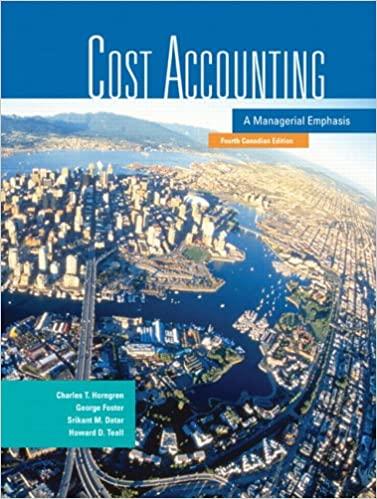Ethics, discounted cash flow analysis. Jaikumar Griffey, manager of the Household Products Division of the Dudley Company,
Question:
Ethics, discounted cash flow analysis. Jaikumar Griffey, manager of the Household Products Division of the Dudley Company, is trying to decide whether to launch a new model of food blender, BF97. Griffey is particularly excited about this proposal, because it calls for producing the product in the company’s old plant at Beaverton, Griffey’s home town. During the last recession, Dudley had to shut down this plant and lay off its workers, many of whom had grown up with Griffey and were his friends. Griffey had been very upset when the plant was closed down. IfBF97 were produced in the new plant, most ofthe laid-offworkers would be rehired.
Griffey asks Andrew Chen, the management accountant of the Household Products Division, to analyze the BF97 proposal. Through the years the company has found that its products have a useful life of six years, after which the product is dropped and replaced by another new product. Chen gathers the following data.
a. BF97 will require new special-purpose equipment costing $1,080,000. The useful life of the equipment is six years, with a $360,000 estimated terminal disposal price at that time.
The equipment qualifies for a capital cost allowance rate of 25%, declining balance.
b. The old plant has a book value of $300,000 and is being amortized for accounting purposes on a straight-line basis at $30,000 annually. The plant is currently being leased to another company. This lease has six years remaining at an annual rental of $54,000. The lease con¬
tains a cancellation clause whereby the landlord can obtain immediate possession of the premises upon payment of $36,000 cash (fully deductible for income tax purposes).
c. Certain nonrecurring market research studies and sales promotion activities will amount to a cost of $360,000 at the end of year 1. The entire amount is deductible in full for income tax purposes in the year of expenditure.
d. Additions to working capital will require $240,000 at the outset and an additional
$240,000 at the end of two years. This total is fully recoverable at the end ofsix years.
e. Net cash inflow from operations before amortization and income taxes is expected to be
$480,000 in years 1 and 2, $720,000 in years 3 to 5, and $120,000 in year 6.
The after-tax required rate of return is 12%. The income tax rate is 36%.
Required 1. Use a net present value analysis to determine whether Chen should recommend launching BF97.
2. Chen learns that the new special-purpose equipment required to make BF97 may only be available at a cost of $1.38 million. All other data remain unchanged. He revises his analysis and presents it to Griffey. Griffey is very unhappy with what he sees. He tells Chen, “Try different assumptions and redo your analysis. I have no doubt that this project should be worth pursuing on financial grounds.” Chen is aware of Griffey’s interest in supporting his home-town community. There is also the possibility that Griffey may be hired as a consultant by the new plant management after he retires next year. Why is Griffey unhappy with Chen’s revised analysis? How should Chen respond to Griffey’s suggestions? Identify the specific steps that Chen should take to resolve this situation.
Step by Step Answer:

Cost Accounting A Managerial Emphasis
ISBN: 9780131971905
4th Canadian Edition
Authors: Charles T. Horngren, George Foster, Srikant M. Datar, Howard D. Teall





